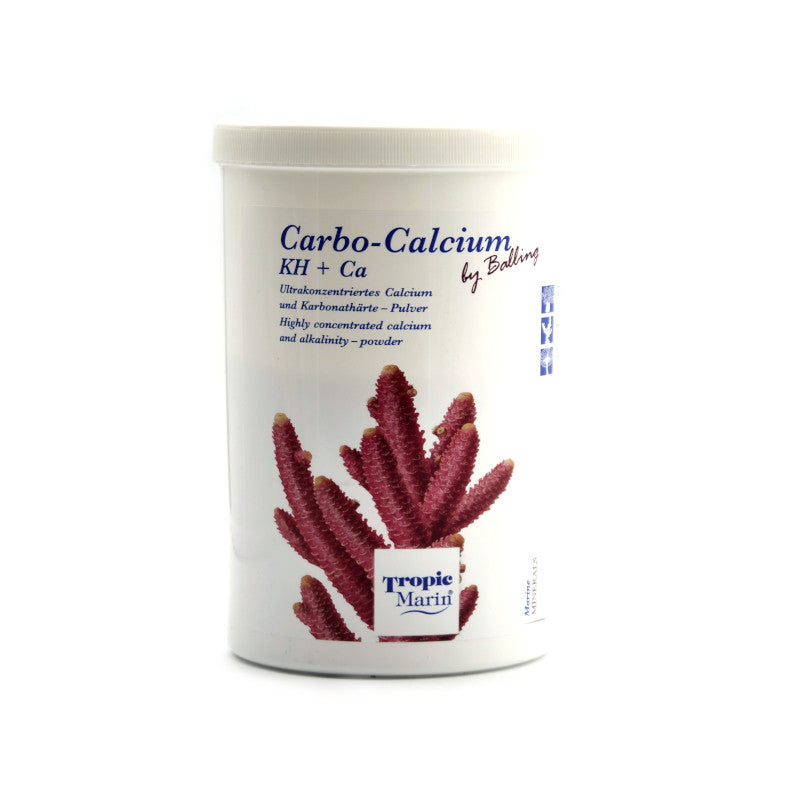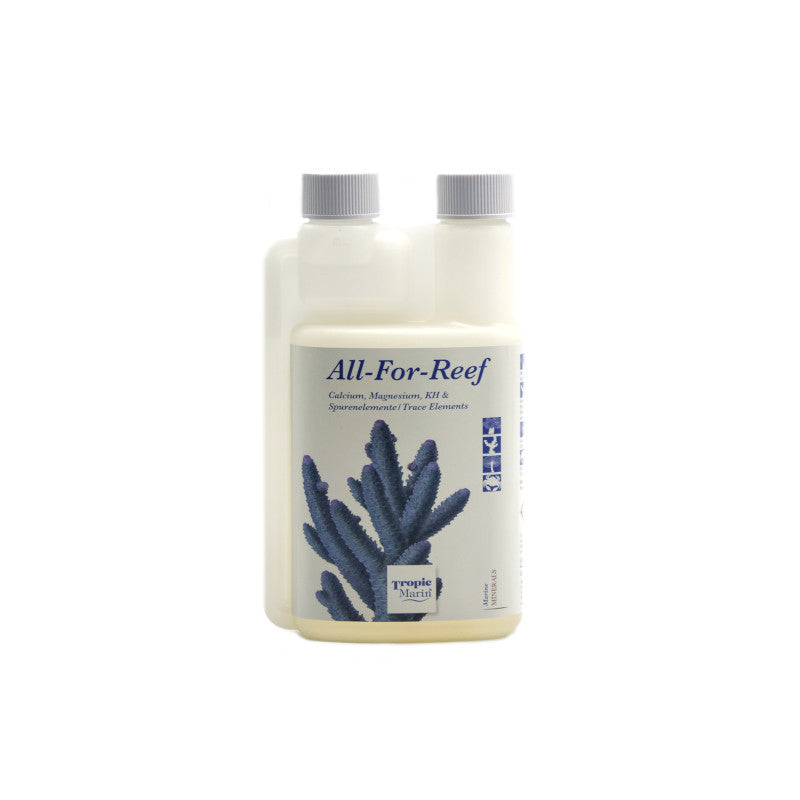Tropic Marin Original Balling
EXPRESS OR STANDARD SHIPPING




Matching products
More Information
Components of the Balling method:
Component A - Calcium chloride: supply of calcium ions
Component B - Sodium bicarbonate: supply of carbonates
Component C - Sodium chloride-free sea salt: Maintains ionic balance
Is it necessary to add lime to a saltwater aquarium?
Yes, because calcifying organisms such as corals, mussels and calcareous algae extract substances from the water that they need for their growth. Calcium and carbonates are incorporated into the skeleton or shell. The concentrations of these substances decrease and must be increased accordingly. This is the only way to ensure that your reef inhabitants continue to develop.
What options for carbonate supply are there in general?
These are: (1) water changes with sea salt suitable for corals, (2) lime water, (3) Balling, (4) variants based on Balling, (5) combination products such as Carbo-Calcium and All-for-Reef and (6) the calcium reactor. Water changes and the addition of lime water are no longer sufficient or impractical when the coral population increases and at the latest when stony corals are introduced - especially in aquariums beyond nano size. The calcium reactor is an additional technical component that is particularly worthwhile for large aquariums - but even here, minor adjustments to the calcium or KH values may be necessary.
How does the Balling method work?
Dissolve the Balling salts in osmosis water according to the instructions on the package or use the ready-to-use version (Liquid Set). The solutions can be used immediately and have a long shelf life. First determine the water volume in your aquarium as well as the calcium concentration and carbonate hardness using suitable water tests. Then determine the required dosage to achieve an optimal calcium value between 400 and 450 mg/l - e.g. with the help of a dosage calculator.
We recommend that you start by slowly increasing the dosage and not increasing the KH by more than 0.5°dH per day. As a guide: For a 500-litre tank, this is around 100 ml. Always add the same amount of each of the 3 Balling solutions and dose at a certain time interval so that precipitation does not occur. Ideally, you should also spread out the daily dose and not add everything to the aquarium at once. A dosing pump can do this job for you.
Now check the water values regularly, especially KH, and gradually adjust the dosage until the addition and consumption levels out. If you notice a disproportion between calcium and KH, the solutions can also be dosed unevenly until the ratio is correct again.
The Balling method causes a slight increase in salinity over time. The salinity can easily be adjusted by changing the water (with component C).
What accessories are needed?
KH test and optional calcium test to check the water values; osmosis water; 3 separate and ideally labelled containers (e.g. canisters) and, if necessary, funnels for preparing the 3 solutions (not necessary for the original Balling Liquid Set); (kitchen) scales (not necessary for the original Balling Refill Set); if necessary, dosing pump including hoses etc. (ensures a consistent supply and thus reduces fluctuations)
Variations of the Balling Method - Application Example Coralaxy
We also use the Balling method in our system for carbonate and calcium supply - but with a few adjustments. Practice has shown that weekly 10% water changes prevent an ion imbalance. We therefore do not use component C. In addition, we add magnesium and trace elements at the same time with the Balling solutions. For this purpose, 17g/l of organic magnesium and 50 ml/l of K + -Elements trace elements are added to Balling solution A. Balling solution B is mixed with 50 ml/l of A - -Elements. The addition of trace elements is thus linked to the calcium and carbonate consumption.


















